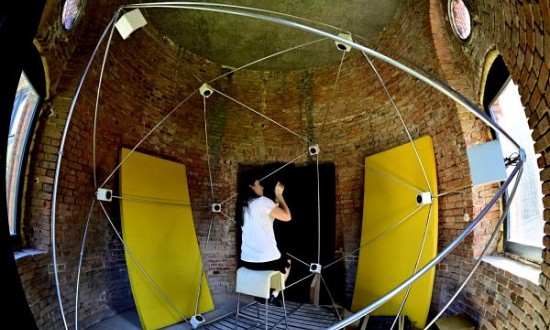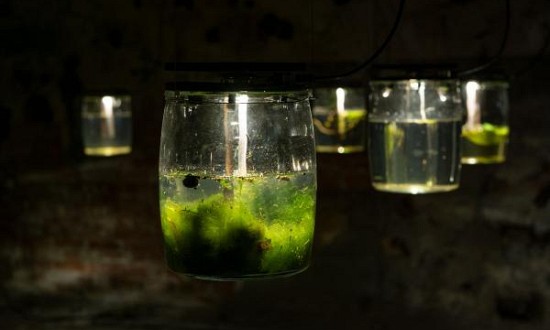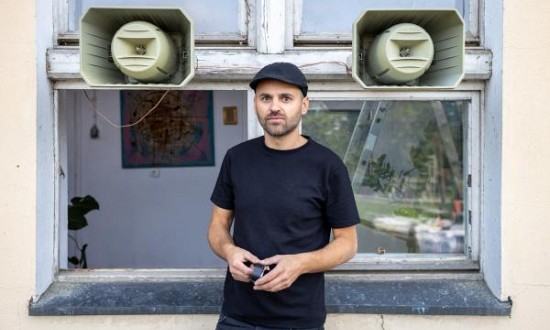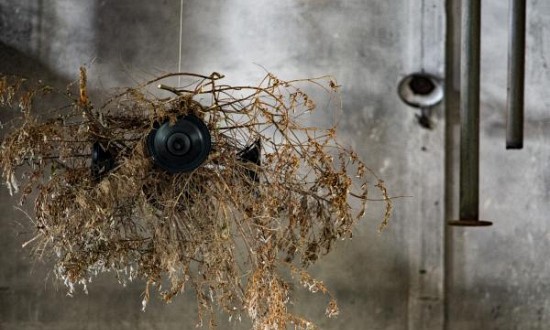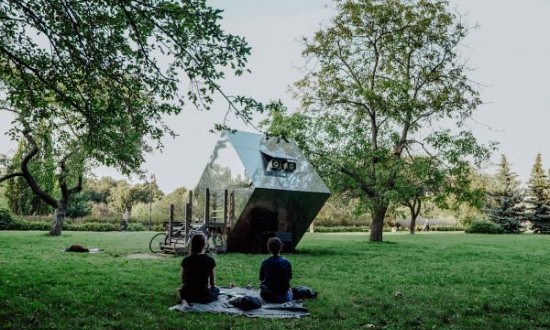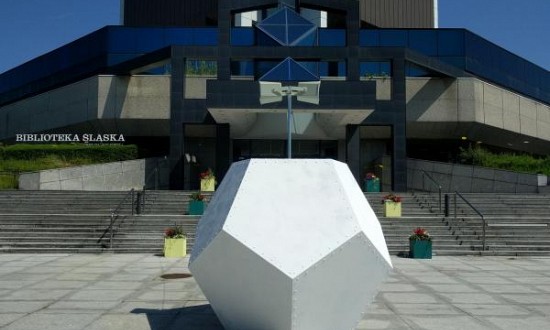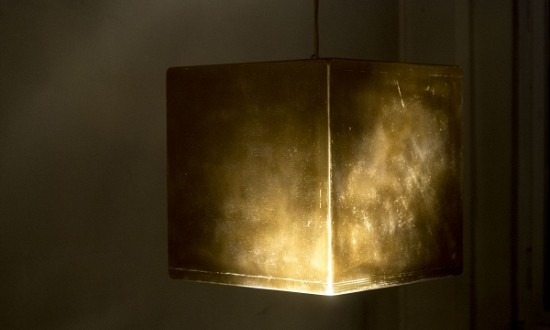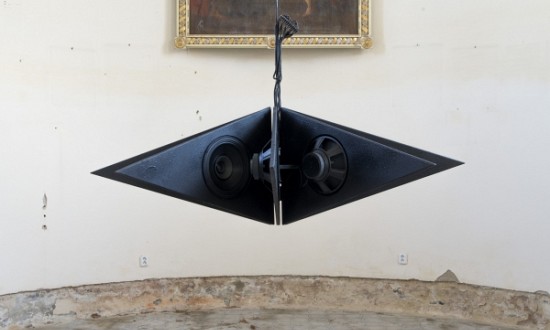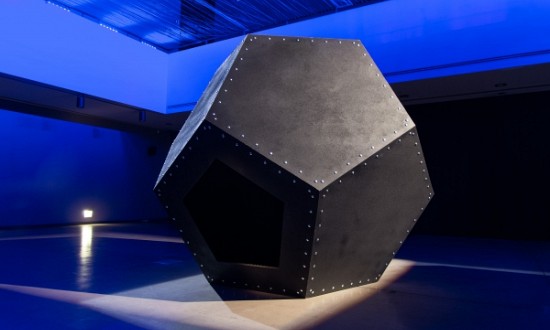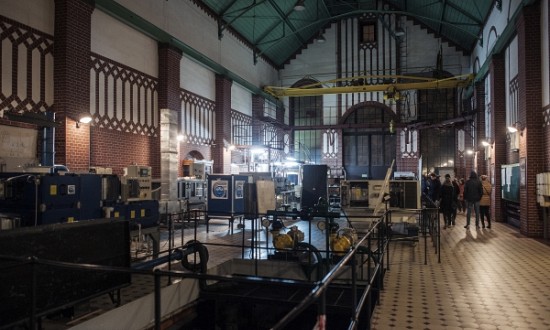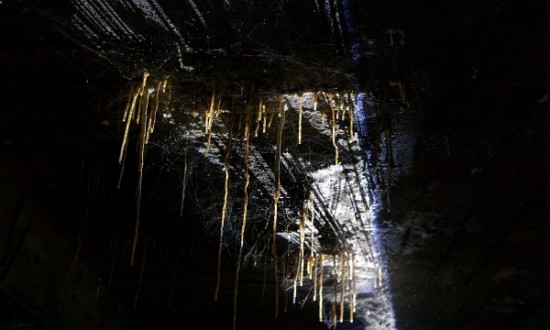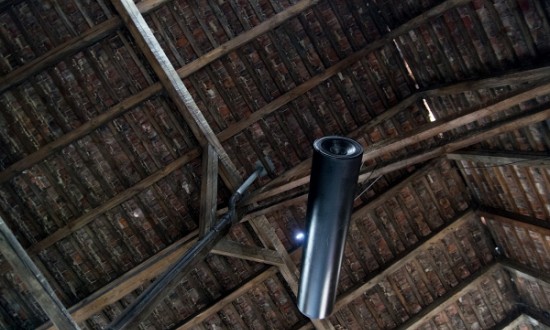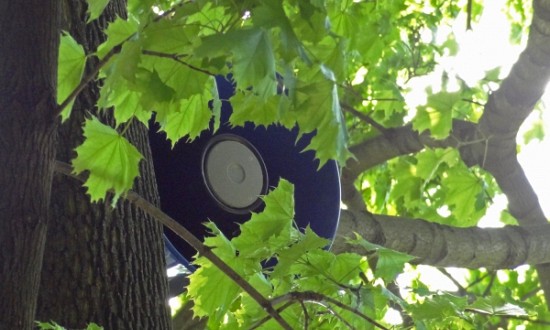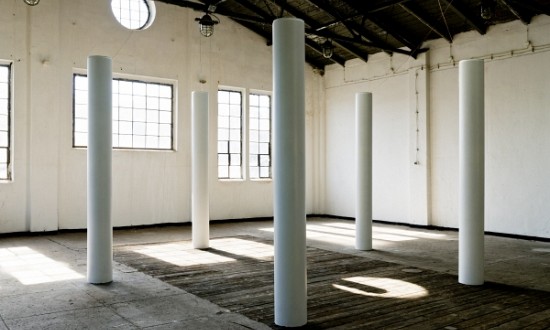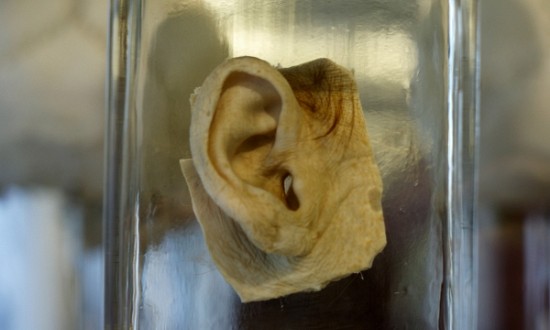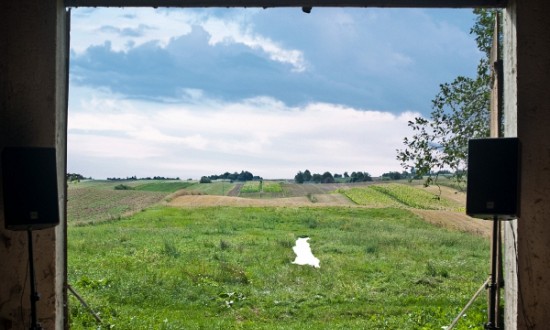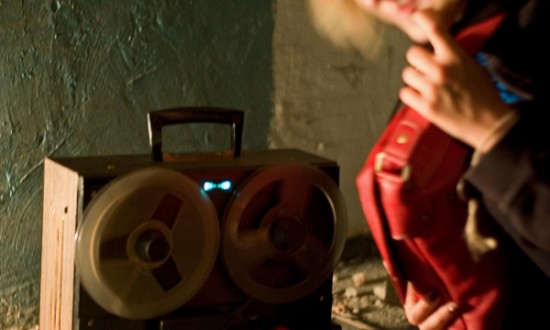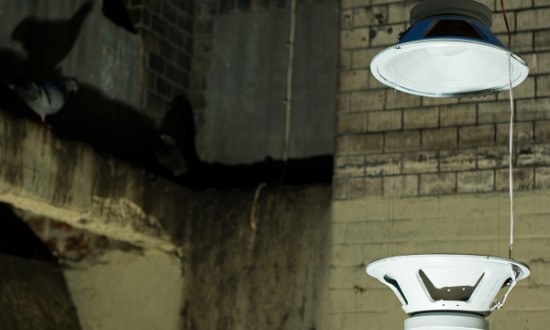http://culture.pl/pl/artykul/czyny-zabronione-w-muzyce-czyli-nowe-instalacje-dzwiekowe-we-wroclawiu
This sound installation consisted of four custom loudspeakers and a sub arranged in the attic of the former police station dating way back to pre-Nazi times in former German city of Wroclaw, Poland. The system created an environment where one became immersed in a multilayered space of sounds emitted by the synthesizer-controlled spatial generative composition based onspectral synthesis combined with amplified sounds of an aerial mast and its guyropes set in vibration by a system of electromagnetic hammers
By entering into discourse with Peter Ablinger’s concept of the “sound perception study”, the piece poses questions about the rudiments of experiencing sounds that fluctuates between analytic listening to individual constituent elements and the perception of the entire sonic spectrum as a holistic “sound”, and about the relations between a sound and the space where it emerges and spreads.
The title of the works is a simultaneous travesty of Ablinger’s ideas and of the official name given to a method of torture used by the CIA in prisons in Guantanamo and Stare Kiejkuty.
curator: Daniel Brożek
This work was commisioned by SURVIVAL Art Review #13 in Wrocław.
Czterokanałowa, przestrzenna kompozycja generyczna bazująca na syntezie spektralnej połączonej z amplifikowanymi dźwiękami masztu antenowego i jego naciągów wprawianych w drgania przez sterowany syntezatorem system elektromagnetycznych młotków.
W instalacji dźwiękowej system wiszących głośników rozmieszczonych w przestrzeni poddasza pozwala zanurzyć się w wielowarstwowym, przestrzennym dźwięku pochodzącym z syntezatora grającego na maszcie antenowym. W polemice z koncepcją „studium percepcji dźwięku” Petera Ablingera twórca stawia pytania: o podstawy doświadczenia dźwiękowego swobodnie dryfującego pomiędzy analitycznych słuchaniem pojedynczych składowych dźwięku a percepcją pełnego spektrum dźwiękowego jako całościowego „brzmienia”, a także o relacje dźwięku z przestrzenią, w której powstaje i się rozchodzi.
Tytuł pracy jest trawestacją zarówno idei Ablingera, jak i nazwy jednej z oficjalnych metod tortur stosowanych przez CIA w więzieniach w Guantanamo i Starych Kiejkutach.




